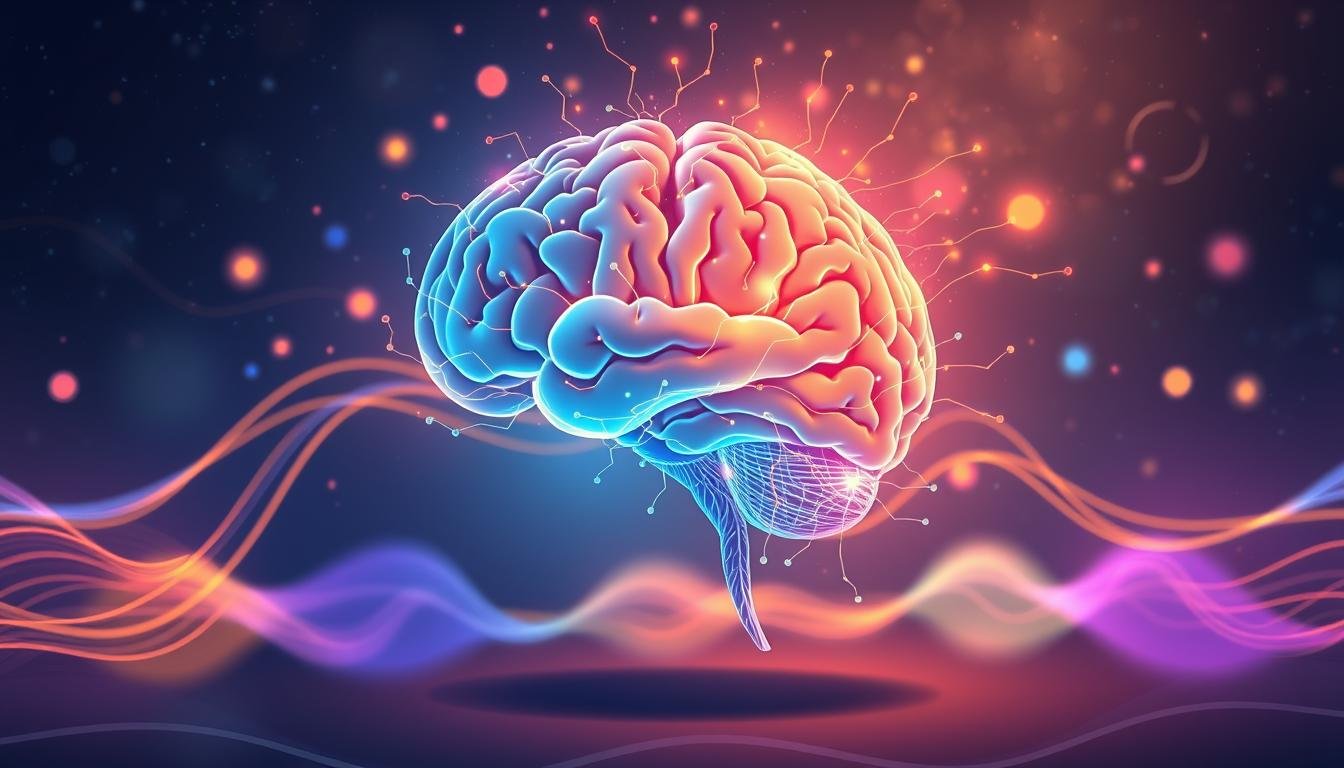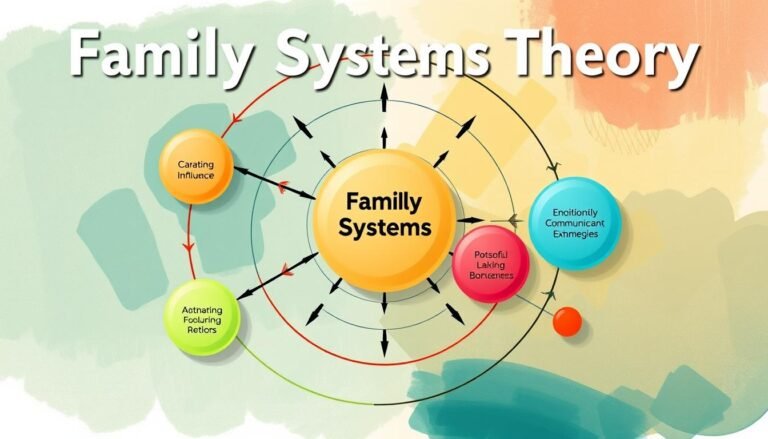Neurofeedback: Optimize Your Brain’s Performance
Ever thought you could train your brain like a muscle? Neurofeedback makes this possible. It’s a new way to improve your brain’s function, known as EEG biofeedback or neurotherapy.
Neurofeedback is a safe therapy that shows you how your brain works in real time. It helps you control your brain better. This way, you can improve your thinking and feelings.
In a 30-minute session, an EEG machine watches your brain’s activity. Experts adjust the challenge based on how you do. This can lessen symptoms of anxiety, depression, and ADHD.
Neurofeedback works with different brainwaves. Each one is linked to a certain state of mind. By changing these patterns, you can get better at focusing, remembering, and thinking quickly.
Let’s dive into neurofeedback’s history, science, and uses in mental health and brain improvement. Get ready to discover your brain’s full potential!
Understanding the Basics of Neurofeedback
Neurofeedback is a modern way to improve how our brains work. It’s a safe method that uses brain mapping and QEEG to check and understand brain activity.
What is neurofeedback?
Neurofeedback, or EEG biofeedback, is a therapy that helps train the brain. It records brain activity and gives feedback in real-time. This helps people learn to control their brainwaves.
The science behind brain waves
Brain waves are electrical signals that happen when brain cells talk to each other. They fall into five groups: delta, theta, alpha, beta, and gamma. Each group is linked to different mental states and tasks. Problems with brain waves can cause mental health issues and thinking problems.
How neurofeedback works
In a neurofeedback session, sensors on the scalp measure brain activity with QEEG. This info is turned into visual or sound feedback, like a game on a computer. As people learn to control their brainwaves, they can get better at thinking, paying attention, and overall brain function.
| Brain Wave | Frequency | Associated Mental State |
|---|---|---|
| Delta | 0.5-4 Hz | Deep sleep, healing |
| Theta | 4-8 Hz | Creativity, emotional connection |
| Alpha | 8-12 Hz | Relaxation, calmness |
| Beta | 12-30 Hz | Focus, problem-solving |
| Gamma | 30-100 Hz | Heightened perception, cognitive processing |
Neurofeedback uses neuroplasticity, the brain’s ability to change and make new connections. This leads to lasting brain improvements. It can help with ADHD, anxiety, and autism, among other conditions.
The History and Development of Neurofeedback
Neurofeedback therapy started in the 1920s. It began with Hans Berger’s discovery of electroencephalography (EEG) in 1924. Berger’s work helped us understand brainwaves and their role in behavior.
In the 1960s, neurofeedback took a big step forward. Dr. Joe Kamiya and Dr. Barry Sterman led studies on brainwaves. Their work led to today’s neurofeedback methods.
Dr. Sterman’s research showed neurofeedback’s power. He found that 60% of epilepsy patients saw a big drop in seizures after SMR training. This sparked interest in using neurofeedback for many conditions.
In the 1970s, neurofeedback became popular among meditators for spiritual growth. By the late 1980s, it was used for attention deficit disorders. The 1990s saw it applied to many psychological and nervous system issues.
Now, neurofeedback is a key tool for mental health and cognitive improvement. It’s used by sports teams, Olympic athletes, and business leaders for top performance. Today’s neurofeedback uses advanced software and equipment, making it a powerful tool for brain improvement.
| Year | Milestone |
|---|---|
| 1924 | Hans Berger discovers EEG |
| 1960s | Kamiya and Sterman pioneer neurofeedback research |
| 1970s | Neurofeedback gains popularity among meditators |
| 1980s | Application to attention deficit disorders begins |
| 1990s | Expanded use for various psychological conditions |
| Present | Advanced technology enhances neurofeedback effectiveness |
Neurofeedback: A Powerful Tool for Brain Optimization
Neurofeedback is a leading-edge method for improving brain function. It uses the brain’s natural learning and adaptation skills. This technique offers many benefits for better thinking and mental health.
Benefits of Neurofeedback Training
Studies show that neurofeedback training boosts brain function. It can make thinking clearer, focus sharper, and performance better. These gains help those with trouble focusing, memory issues, and stress.
- Improved cognitive functions
- Enhanced focus and attention
- Better emotional regulation
- Reduced stress and anxiety
Neuroplasticity and Brain Training
Neurofeedback works by using neuroplasticity, the brain’s ability to create new paths. A study with 36 healthy people showed that just under an hour of training improved brain connections. It also made brain areas talk better and body movements smoother.
Real-time Feedback and Self-Regulation
Neurofeedback gives instant feedback on brain activity. This lets people help their brains get better. At APEX Brain Centers, it’s a key tool for those with brain injuries, cognitive issues, and learning disorders.
“Neurofeedback offers a non-invasive, drug-free approach to brain optimization, making it an increasingly popular choice for those seeking to enhance their cognitive performance and mental well-being.”
Applications of Neurofeedback in Mental Health and Cognitive Enhancement
Neurofeedback therapy is a powerful tool for improving mental health and cognitive functions. It has shown great results in enhancing response inhibition and overall brain performance. For kids with ADHD, it has led to better brain wave patterns and symptom reduction.
Neurofeedback is versatile and helps with anxiety, depression, trauma, migraines, and autism spectrum disorders. It’s used in clinics, schools, and research facilities to target specific brain areas. For example, Hope Brain Center has seen improvements in neuropathy relief, chronic pain, and migraines through personalized care.
Neurofeedback therapy is effective because it’s tailored to each person’s needs. Sessions are designed to create a calm environment for optimal brain function. This non-invasive method helps individuals improve attention, memory, and emotional regulation.
Recent research with 166 participants showed neurofeedback’s benefits on memory and working memory. This approach is more effective than cognitive training alone. It offers a promising way to keep and improve cognitive functions as we age.
Source Links
- Neurofeedback Explained: Training Your Brain for Better Health – Mindstate Psychology Blog
- Neurofeedback: A Comprehensive Review on System Design, Methodology and Clinical Applications
- What is Neurofeedback? A Psychiatrist’s Perspective – SURUCHI CHANDRA M.D.
- Dr. Fotuhi | Best Neurologist | Author | Speaker
- Neurofeedback Therapy Basics | NHA Associates
- History and Development of Neurofeedback
- The History of Neurofeedback – Chicago Mind Solutions
- A Brief History of Neurofeedback – The Well Mind Center
- Neurofeedback: A Game-Changer in Brain Health and Performance – APEX Brain Centers | Asheville NC
- Train Your Brain with Neurofeedback
- Unlocking the Mind: Enhancing Cognitive Function with Neurofeedback – Hope Brain & Body Recovery Center
- The Effect of Cognitive Training with Neurofeedback on Cognitive Function in Healthy Adults: A Systematic Review and Meta-Analysis








